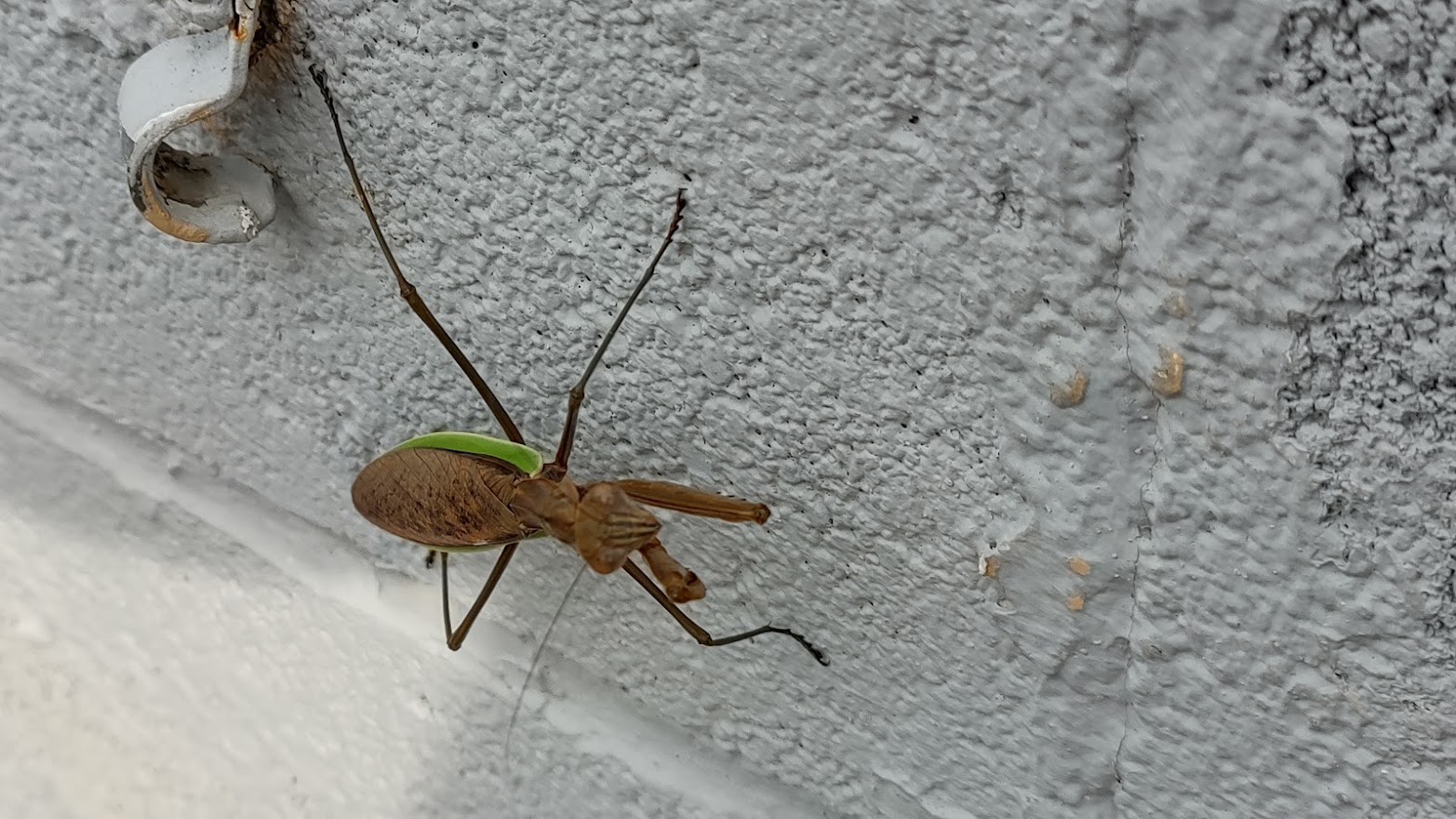 Mantises are usually green, brown, or grey in color. They have triangular heads with elbowed antennae, large compound eyes that pivot sideways (giving them nearly 360-degree vision), and a flat body. The praying mantis is named for the way its front limbs are held together in a prayer-like posture that gives them great camouflage. While they can move relatively fast, their speed is limited by the fact the back two legs act as arms and not as legs. Some species may have wings with which they fly if danger presents itself but most cannot fly.
Mantises are usually green, brown, or grey in color. They have triangular heads with elbowed antennae, large compound eyes that pivot sideways (giving them nearly 360-degree vision), and a flat body. The praying mantis is named for the way its front limbs are held together in a prayer-like posture that gives them great camouflage. While they can move relatively fast, their speed is limited by the fact the back two legs act as arms and not as legs. Some species may have wings with which they fly if danger presents itself but most cannot fly.
They are an excellent garden friend because they eat harmful pests that might be damaging your plants, such as aphids and leafhoppers. But beyond being a helpful friend, the praying mantis is an animal with many unique and fascinating facts.
Known as mantises in North American or European countries and more than 2000 other regional names such as “praying mantis,” “preying mantis,” “mantid,” or just “mantis”—the common name for this insect around the world varies as much as its color variations. The name “praying mantis” comes from a unique stance that gives this insect the look of being in a prayerful position, though it is not known why they bend their front limbs into this posture and how they develop this behavior.
The female praying mantis lays her eggs first after choosing a mate. She can lay up to about 400 eggs which she carries around with her front legs until they hatch. The female mantises cannot eat while carrying the eggs. She spends a lot of time caring for her young, guarding the egg sac firmly until they are ready to be on their own. Mantises can live up to one year and sometimes longer.
In order to survive, praying mantises eat almost any kind of animal (not plant material). They consume flies, mosquitoes, grasshoppers, crickets, worms, and beetles. They use their front legs to catch and hold onto their prey while using the long spines along the inside of their legs to deliver a bite. The adult mantis may eat between 40 and 80 insects per week. That’s a lot of help from one insect!
Mantises are a garden friend, eating pests to help keep your plants safe. So if you want some great protection against harmful insects such as aphids, leafhoppers, flies, mosquitoes, grasshoppers or crickets—don’t harm these friendly creatures.
